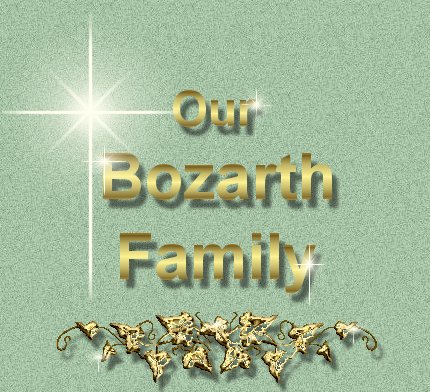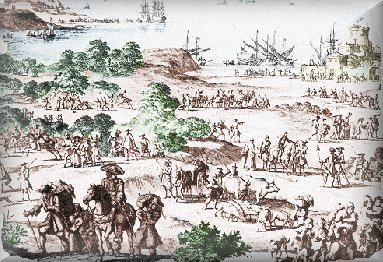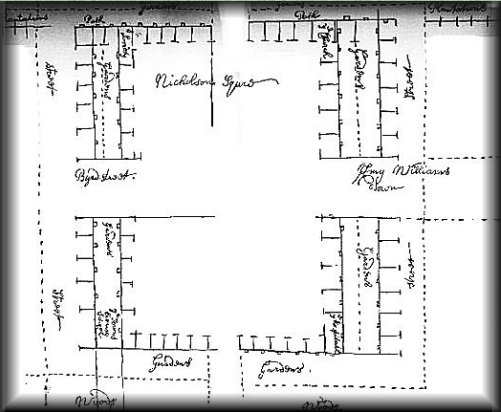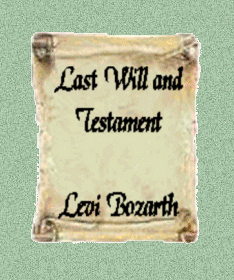
Chapter 1Simon
Simon Bozorth was born about 1690 in Alsace, Lorraine, France. He is believed to be the son of Johann Bousart and Margaretha Muller. Margaretha was the daughter of Hans Muller, a citizen and grape dealer of Westhoffen. Johann was a linen weaver very adept at his trade. Margaretha was also quite proficient in linen weaving and on March 24, 1691 she received the citizen right from Johann Bousart, to serve in a respectable cloth guild. The date of their marriage is unknown, however, this was during the time of the European rule by the Church of Rome. Johann Bousart and his wife were Protestants in a land where it was forbidden and thus there was a general edict, which encouraged the extermination of the “dissenters or heretics”, and many of the French people fled to other countries all over the world. They became to be known as the French Huguenots. This was not a term chosen by the French Protestants, it was an abusive name bestowed upon the French Protestants who referred to themselves as “reformees”.

The name of Huguenot, as applied to the dissenters from the Church of Rome, is supposed to have been derived from Hugenon to signify persons who “walk by night”. Their only safe place of worship had been dark caves. It was not until many years later that the name “Huguenot” became a title of respect. Even though the Huguenots were important to the economy of France, as many were wealthy and prosperous merchants and manufacturers and most of the poorer ones were sober and industrious, King Louis saw the revocation of the edict as a rationale for confiscation, and the proceeds lined the pockets of many of the nobles of his court.

Thousands of Huguenots were murdered in France. King Louis XIV (the Sun King) began to apply his motto “I am the State” and revoked the Edict of Nantes that had allowed the Protestants to worship openly. Protestant churches and houses of “obstinates” were burned and destroyed; Bibles and hymn books were burned. Immigration was declared illegal and many Huguenots were burned at the stake. At least 200,000 Huguenots fled to other countries; between 1618 and 1725 approximately 5,000 to 7,000 Huguenots reached the shores of America.

Johann Bousart and his family managed to escape to England where they lived for a short time, however, so many Huguenots had immigrated to London that many of the jobs were being taken from the English people. Even though the English people were very charitable and wanted to help the French refugees it was apparent that the people of England were losing the means of supporting their families and so the refugees were sent to America. There were four ships that made the voyage to Virginia in 1700.
 The passenger list
The passenger list
Johann Bousart and his family came to America aboard the ship “Peter and Anthony”, him being listed as Jean Bossart, wife and three children. The name was spelled three different ways during that voyage depending upon who was making up the list. Most of the refugees did not know how to read or write and thus it was left up to the English authorities to put their names on the lists. Many French names were spelled the way the English thought they should have been spelled and so the names became more English, in many cases, than French. The ships lists were not alphabetized, however, Johann Bossart was listed second immediately after their minister, thus indicating that Johann may have been second in charge of this group. On arrival to America Johann’s surname was spelled Bossard; later it was Bosart, Bosard, Bassard, Bosier, Boser, Bozer, Bozworth, Bosworth and several other ways, and there are many descendants carry the various spellings. Bozarth was the spelling that was used primarily by Johann’s grandchildren and great grandchildren and at this time almost every BOZARTH that has been researched is a descendant of Simon’s. Some have not found the link but most have. Simon had at least two siblings prior to arrival at Manikintowne and there may have been several more born in America, which have not yet been identified, so who knows how they spelled the name, or how it was spelled for them.

Upon arrival to the new land they were transported, first by boat up the James River and then overland to a place called Manakintowne in Virginia. This was a deserted Indian Village, an area of land that was already cleared and they were able to build shelters. It is located in Henrico Co, Virginia and now bears the name Manakin. It is just a few miles west of Richmond, VA. The first winter the refugees had to be provided with food by the charitably inclined Virginia people. There was also food provided by England, still, it did not always reach all the people because it was being taken to other sites where there were other French refugees. One night Jean Bossard and a few other men invaded another camp and took the food that was supposed to have been brought to them in Manakintowne. They then signed a petition, which was sent to the Governor asking for food until they could get their corn planted and harvested. The Governor sent some of his men to check out this village. Upon inspection of Manakintowne by Capt. Randolph, Capt. Epes, and Capt Webb, they found 70 huts, some very poor; they had cleared about 3 miles of gardens that were poorly tended, and the corn was not in. They found the people, although very poor, were cheerful and appeared healthy. They had suffered from sickness but the loss by death was not great. The number of people provided for at Manakintowne was 218, the total population.

It was not long before the people began gradually to desert the village in order to build their own houses in the country. They built their own Churches and began to start businesses, and to earn money, although mostly they bartered. In 1705 Jean was “naturalized” and became a citizen of America. His family is not mentioned but it is believed that the Husband having been naturalized, his wife and children became citizens too. Evidently Johann and his family traveled to New Jersey for this is where Simon’s records are first found. It could have been that Simon traveled alone or perhaps with some of his siblings, but at this time we have no way of knowing.
The first record of Simon Bozorth is in May of 1713. Simon is estimated to be about 23 to 25 years old as his exact birth date is unknown. It was on this date that Simon became “indentured” to Samuel Coles for 50 acres of land in the County of Gloucester, New Jersey. He is listed as “Husbandman”, having married Mary Marson prior to that time, their first child being born in 1713. There is little written about Simon and his wife but it is known that he was a farmer and that they had eight children; Thomas, John, Elizabeth, Mary, Samuel, Bathsheba, Andrew and Experience. Simon writes his will in 1749
 
I Simon Borsworth (note spelling) of the Township of Evesham and County of Burlington and province of Western Jersey being at this time in health but considering the uncertainty of this life and that it is expected for all men once to dye, I make and ordain this to be my last will and testament making null and void all former wills and testaments and this only to be taken for the same. My will is that my just debts be paid, paid by my executor and Executors hereafter named.
Item I give to my son Thomas five shillings as a remembrance, and no more.
Item I give to my son John five shillings as a remembrance and no more.
Item I give to my son Samuel all that part of my farm or plantation that lyes bak or over the road that leads from ---------to William Garwoods that is to say, all my lands joyning to Daniel Garwood and John Garwood that over -------- road and the following piece of land on the ------- side of the road next to the -------- beginning at ---------- afore ----- road and down the lain to an appletree on a corner in the lain thence about East to a nother appletree for the corner thence to short way to a black oak tree by ----- of the above to road being ------ to a survey of ninty five acres the above ----- land ----- and son Samuel and his hiers and assigns forever.
Item I give to my loveing wife Mary the use and income of the remaining part of the lands, houses and improvements so long as she shall bear my name and no longer.
Item I also give to my daughter Experience, a being in the house, so long as she shall lead a single life; but no other privileges.
Item I give to my son Andrew my homestid or other part of my farm not before bequeathed which lyath next the creek to him and to his hiers and assigns forever.
Item I give to my daughter Elizabeth Springer one shilling and no more.
Item I give to my daughter Mary Longman one shilling and no more.
Item I give to my daughter Experience the sum of ten pounds to be paid out of my moveable estate.
Item I give to my son Andrew the rest and remaining part of my homestid or other part not bequeathed which is not above before said and to his dispossing.
Item My will is that if my son Andrew should Dye or if Samuel Do Depart this life before he attains the age of twenty five years without hiers I will that then his Share and portion of land be for my son Thomas and to his hiers and assigns forever with paying to my son John the sum of Thirty pounds proclimation money.
Lastly I do nominate construe and appoint my loveing wife Mary my Executrix and my son Andrew my Executor of this last will and testament in witness where of I have here with sett my hand and seal this twenty fifth day of September one thousand seven hundred and fourty and nine.
Signed, sealed and delivered in the presents of Hannah Foster, -------Haines, William Foster;
(signed) Simon Bozorth

Upon Simon’s death his estate was appraised as to it’s worth;
“A true inventory of goods and chattels rites credits and interests of Simon Bozorth late of the township of Evesham in the county of Burlington, deceased; as they were appraised this 19th day of February 1773 by us whose names are hereinunder written.”
dress and apparel £ 7 - 0 - 0
horses saddle and bridle 8 - 0 - 0
beds and furniture 10-10- 0
note of hand and book debts 7 -3 -10
chests long settle woolen cloath and yarn and
sundries 6 -13 -0
pewter and ironpots and sundries 4-17 -0
Some buckwheat spinning wheel and sundry
household goods 3 -14 -9
plow and harrow ox chaines horse gears and shoes
and sundries 4 - 8 - 6
hey and Indian corn and such 10 - 0 - 0
green corn in the ground and hay and a cart 9 - 0 - 0
cattle sheep and hogs 23 - 11-0
Total Sum £ 94 -11- 1
When Simon wrote his will his daughter Experience was still a young girl of about 14; she did eventually marry a Thomas Connor so she wasn’t the “spinster” that the will makes her appear to be. Simon’s children all married and most had many children, some had many wives and/or husbands and his descendants began to grow
In the beginning
Chapter 2
Chapter 3
Chapter 4
Chapter 5
Chapter 6
Chapter 7
Home
|
|